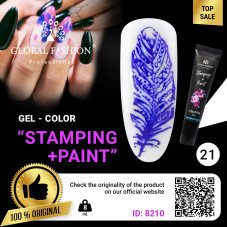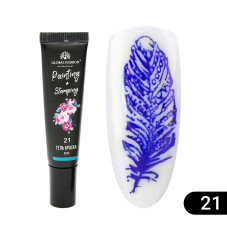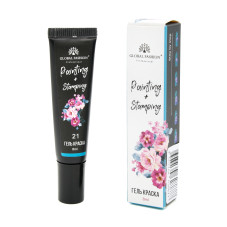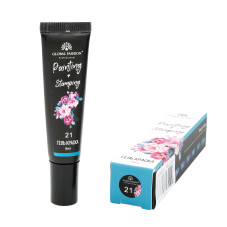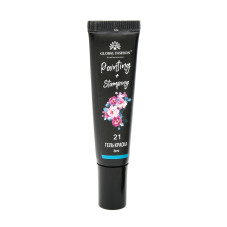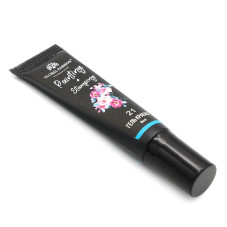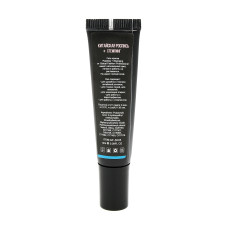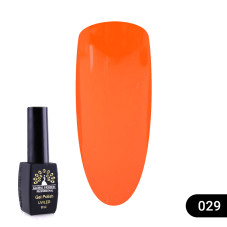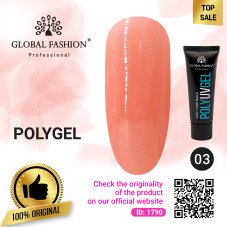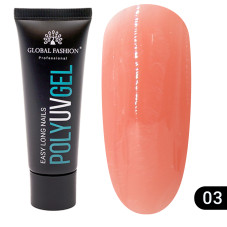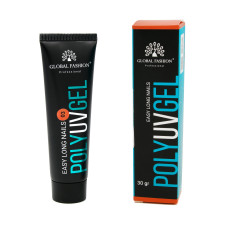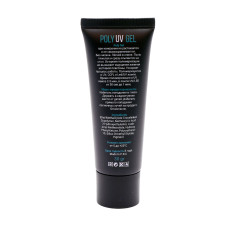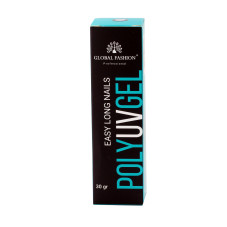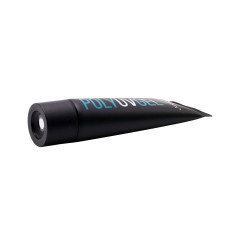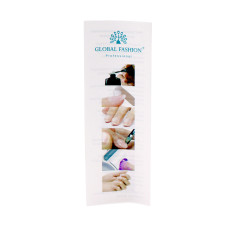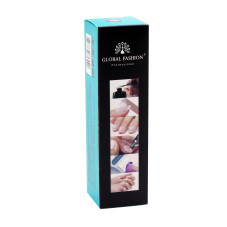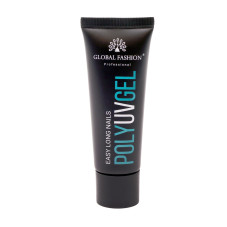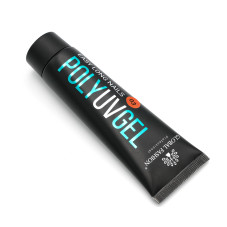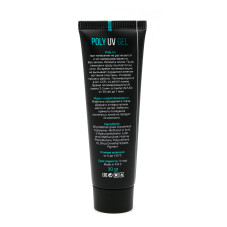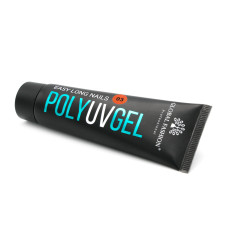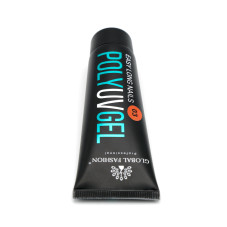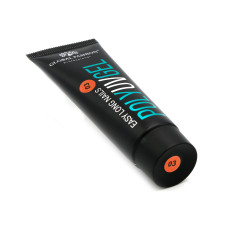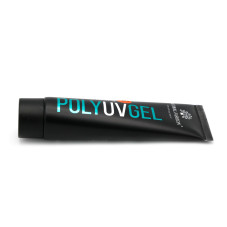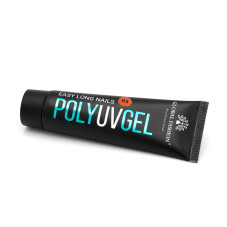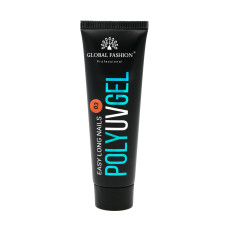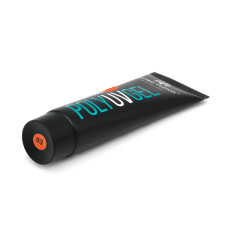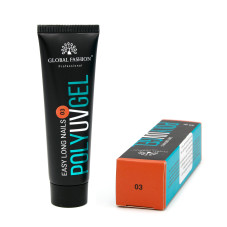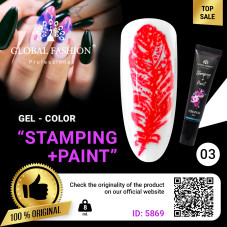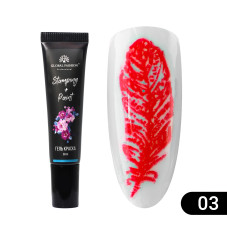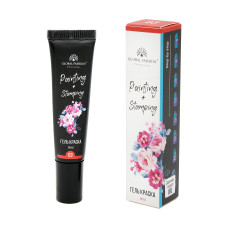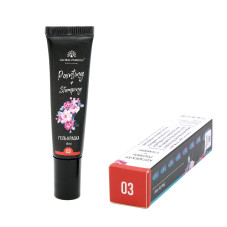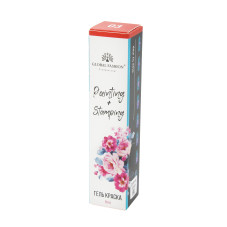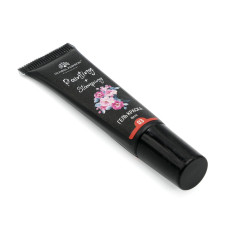Cutters for a hardware manicure. How to choose?

A manicure machine is a «luxury» procedure, which is no surprise because thanks to this procedure, you can achieve perfectly smooth nails quickly and efficiently and maintain their structure. But for a manicure to work properly and accurately, it is necessary to choose the right tools, one of which is the cutters for the manicure machine. To make the right choice, in this article we have tried to 'lay out' everything as thoroughly as possible, so read on and use «to your health»!
What are cutters for?
Manicure cutters are designed to:
- removal of gel nail polish.
- nail grinding.
- flank treatment.
- cuticle removal.
- foot treatment for pedicures.
- nail shaping.
- fast nail trimming.
Types of cutters for hardware manicures
The cutters available on the market come in different shapes, sizes, hardness and abrasiveness. Each cutter has its own purpose.
Ceramic cutters. They do not corrode, do not become hot during rotation and the protrusions on the burrs do not clog with dust. They work on skin and nails, lateral ridges and cuticles. Cutters made of ceramic are available in different shapes and grits. Perfect for those just learning to get a manicure. Ceramics are not sensitive to chemical disinfectant solutions, it can be heated in an autoclave or dry oven. The most commonly used accessories are of medium abrasion resistance. If you want to treat hard surfaces, it is better to buy very hard tips. For treatment of the skin around the nail plate and removal of cuticles, preference should be given to nozzles with fine abrasion.
The peculiarity of ceramic cutters is their fragility. It is necessary to handle them with care: the fall on the floor threatens to chop the surface.
Diamond cutters. These tools are suitable for work with both delicate skin and brittle nails, and with thickened plate, artificial materials for nail extension. They cut off the free edge of the nail and the rough skin. These tools are used by true professionals: the cutters allow treatment of the nail surface with maximum precision and accuracy. Diamond nozzles can be natural or artificial. The latter work quickly dull and crumble, so preference should be given to natural diamond crumbs. The size of the nozzles presented determines where they can be used. If you want to work on the cuticle and the skin near it, you should install a small cutter in the chuck. If you use the largest varieties of these tools, you can remove calluses. It is also one of the safest types of rotary tool.
The peculiarity of diamond cutters - they do not heat up during operation, treat skin and nail well on low-power machines: up to 20 thousand rpm.
Corundum cutters. Suitable for natural, artificial nails, skin around the cuticle and feet. Made from crystalline aluminium oxide, an artificial ruby. Its gentle abrasive properties are used for gentle treatment of sensitive skin. The risk of injury is extremely low, which is why we recommend it to beginners.
The peculiarity of corundum stone cutters is the retention of their properties even if the nozzle is abraded.
Carbide cutters. This category includes both metal cutters and cutters made of other hard alloys. They are made from a tungsten-based metal mix. They are unrivalled when working on cuticle and lateral rollers, but natural nails must be treated with care due to high injury risk. Therefore, it is usually recommended to use these cutters to work with artificial nails. They will cope with sawing off the length, correction, and shaping the edge after the extension.
A distinction is made between carbide cutters according to the type of notches:
Straight - rigid, traumatic.
Oblique - medium variant.
Cross-shaped, trellis-shaped - suitable for gentle processing.
The peculiarity of carbide cutters is absence of dust when working with all types of surfaces.
Cutters-grinders and polishers. In the final stage of manicure, you will need:
Sanders - help to perfect nail plates, smooth out any imperfections and remove excess gel or acrylics.
Polisher - used to remove any imperfections and burrs and give your acrylic nails a glossy finish.
Sanding caps. You can use the sanding caps to gently treat rough skin on nail beds, remove calluses in manicures and pedicures. The cap is put on a rubber or metal base and is single-use and must be disposed of after use.
Abrasiveness of cutters
Cutters are divided into 6 types according to their abrasiveness.
white - the gentlest and finest.
yellow - extra fine, it is possible to work both on skin and on natural nail (15 microns).
red - fine, side roller treatment, crack and callus removal (30-50 microns).
blue - medium, lifts the cuticle (for further removal of the dry part), cleans the pterygium and treats the lateral ridges (90-125 microns).
green - coarse, for working on rough skin (125-181 microns).
black - extra coarse, the coarsest cutter. «Black» cutters are not used when working on natural nails and even more so on skin. Suitable only for artificial nails (300-500 microns).
Please note: You need good-quality nail files? Then go to our online-shop Global Fashion. Go to catalogue
Cutter shapes
The shape of the cutter determines the type of work to be carried out on the attachment.
1. Needle. Used for cleaning in hard-to-reach areas, e.g. the joint between the nail bed and the nail plate. The shape of the burrs tells you which type of work is intended for the nozzle.
2. Ball. It is also suitable for treatment of lateral rollers, correction of nail bed shape at the free edge, removal of artificial nails. It is also suitable for treatment of the area under the nail after nail extension.
3. Bur. Cutter with a small ball at the end. Suitable for removing cuticles and pterygiums. For use on the skin. For use on shoulders, fissures, calluses, etc.
4. Cone. Ideal for treating and filing the lateral nail bed.
5. Cylinder. Use this cylindrical cutter to remove nail polish and give nails the desired shape and length, also effectively removes calluses and corns on feet.
6. Drum (a type of cylinder). Extra coarse abrasive cutter for cleaning rough skin, calluses. Sharpen hard nails and smooth out wounds, leaving the nail plate flat.
7. Corn. Gives the nails the best shape and length, cuts gel and acrylics. Ideal for corrections.
About safe cutters
A safety cutter is a cutter without any abrasiveness. Instead of abrasive, the burrs have six sides, so they do not wear out so quickly and last much longer than diamond burrs. These burrs are good for removing pterygium and gently treating cuticle build-up. The safe cutter works like a pusher and pushes the cuticle.
After the cuticle has been treated with the Safety Cutter, it can be cut with scissors or a diamond ball cutter.
It's worth noting that even the safety cutters will become «dangerous» if used incorrectly. As with conventional cutters, the safety cutter should not actively press on the nail plate.
How do I clean and store cutters?
Carbide and diamond drills are pre-cleaned from dust and skin particles with a special brush, then disinfected in a solution and sterilised along with the other instruments. Sand caps are intended for single use and are replaced by a new one after each client.
Cutters, like other instruments to be sterilised, should be stored in a Kraft bag. During work, you can leave them on a special stand, where they will always be at hand and you can easily take the cutters you need to insert them into the machine. Buy cutters
We have tried to 'shelve' all the necessary information about routers, we hope it has been useful to you.
We've also got some interesting articles here:
1. Manicure router. Manicure art helper
2. A machine manicure is a super technology!
3. Hardware pedicure - convenient and easy
4. Which manicure suits you?
5. Manicure extractor. Master and client safety
6. How to choose a manicure lamp? Let's understand the nuances!
What are cutters for?
Manicure cutters are designed to:
- removal of gel nail polish.
- nail grinding.
- flank treatment.
- cuticle removal.
- foot treatment for pedicures.
- nail shaping.
- fast nail trimming.
Types of cutters for hardware manicures
The cutters available on the market come in different shapes, sizes, hardness and abrasiveness. Each cutter has its own purpose.
Ceramic cutters. They do not corrode, do not become hot during rotation and the protrusions on the burrs do not clog with dust. They work on skin and nails, lateral ridges and cuticles. Cutters made of ceramic are available in different shapes and grits. Perfect for those just learning to get a manicure. Ceramics are not sensitive to chemical disinfectant solutions, it can be heated in an autoclave or dry oven. The most commonly used accessories are of medium abrasion resistance. If you want to treat hard surfaces, it is better to buy very hard tips. For treatment of the skin around the nail plate and removal of cuticles, preference should be given to nozzles with fine abrasion.
The peculiarity of ceramic cutters is their fragility. It is necessary to handle them with care: the fall on the floor threatens to chop the surface.
Diamond cutters. These tools are suitable for work with both delicate skin and brittle nails, and with thickened plate, artificial materials for nail extension. They cut off the free edge of the nail and the rough skin. These tools are used by true professionals: the cutters allow treatment of the nail surface with maximum precision and accuracy. Diamond nozzles can be natural or artificial. The latter work quickly dull and crumble, so preference should be given to natural diamond crumbs. The size of the nozzles presented determines where they can be used. If you want to work on the cuticle and the skin near it, you should install a small cutter in the chuck. If you use the largest varieties of these tools, you can remove calluses. It is also one of the safest types of rotary tool.
The peculiarity of diamond cutters - they do not heat up during operation, treat skin and nail well on low-power machines: up to 20 thousand rpm.
Corundum cutters. Suitable for natural, artificial nails, skin around the cuticle and feet. Made from crystalline aluminium oxide, an artificial ruby. Its gentle abrasive properties are used for gentle treatment of sensitive skin. The risk of injury is extremely low, which is why we recommend it to beginners.
The peculiarity of corundum stone cutters is the retention of their properties even if the nozzle is abraded.
Carbide cutters. This category includes both metal cutters and cutters made of other hard alloys. They are made from a tungsten-based metal mix. They are unrivalled when working on cuticle and lateral rollers, but natural nails must be treated with care due to high injury risk. Therefore, it is usually recommended to use these cutters to work with artificial nails. They will cope with sawing off the length, correction, and shaping the edge after the extension.
A distinction is made between carbide cutters according to the type of notches:
Straight - rigid, traumatic.
Oblique - medium variant.
Cross-shaped, trellis-shaped - suitable for gentle processing.
The peculiarity of carbide cutters is absence of dust when working with all types of surfaces.
Cutters-grinders and polishers. In the final stage of manicure, you will need:
Sanders - help to perfect nail plates, smooth out any imperfections and remove excess gel or acrylics.
Polisher - used to remove any imperfections and burrs and give your acrylic nails a glossy finish.
Sanding caps. You can use the sanding caps to gently treat rough skin on nail beds, remove calluses in manicures and pedicures. The cap is put on a rubber or metal base and is single-use and must be disposed of after use.
Abrasiveness of cutters
Cutters are divided into 6 types according to their abrasiveness.
white - the gentlest and finest.
yellow - extra fine, it is possible to work both on skin and on natural nail (15 microns).
red - fine, side roller treatment, crack and callus removal (30-50 microns).
blue - medium, lifts the cuticle (for further removal of the dry part), cleans the pterygium and treats the lateral ridges (90-125 microns).
green - coarse, for working on rough skin (125-181 microns).
black - extra coarse, the coarsest cutter. «Black» cutters are not used when working on natural nails and even more so on skin. Suitable only for artificial nails (300-500 microns).
Please note: You need good-quality nail files? Then go to our online-shop Global Fashion. Go to catalogue
Cutter shapes
The shape of the cutter determines the type of work to be carried out on the attachment.
1. Needle. Used for cleaning in hard-to-reach areas, e.g. the joint between the nail bed and the nail plate. The shape of the burrs tells you which type of work is intended for the nozzle.
2. Ball. It is also suitable for treatment of lateral rollers, correction of nail bed shape at the free edge, removal of artificial nails. It is also suitable for treatment of the area under the nail after nail extension.
3. Bur. Cutter with a small ball at the end. Suitable for removing cuticles and pterygiums. For use on the skin. For use on shoulders, fissures, calluses, etc.
4. Cone. Ideal for treating and filing the lateral nail bed.
5. Cylinder. Use this cylindrical cutter to remove nail polish and give nails the desired shape and length, also effectively removes calluses and corns on feet.
6. Drum (a type of cylinder). Extra coarse abrasive cutter for cleaning rough skin, calluses. Sharpen hard nails and smooth out wounds, leaving the nail plate flat.
7. Corn. Gives the nails the best shape and length, cuts gel and acrylics. Ideal for corrections.
About safe cutters
A safety cutter is a cutter without any abrasiveness. Instead of abrasive, the burrs have six sides, so they do not wear out so quickly and last much longer than diamond burrs. These burrs are good for removing pterygium and gently treating cuticle build-up. The safe cutter works like a pusher and pushes the cuticle.
After the cuticle has been treated with the Safety Cutter, it can be cut with scissors or a diamond ball cutter.
It's worth noting that even the safety cutters will become «dangerous» if used incorrectly. As with conventional cutters, the safety cutter should not actively press on the nail plate.
How do I clean and store cutters?
Carbide and diamond drills are pre-cleaned from dust and skin particles with a special brush, then disinfected in a solution and sterilised along with the other instruments. Sand caps are intended for single use and are replaced by a new one after each client.
Cutters, like other instruments to be sterilised, should be stored in a Kraft bag. During work, you can leave them on a special stand, where they will always be at hand and you can easily take the cutters you need to insert them into the machine. Buy cutters
We have tried to 'shelve' all the necessary information about routers, we hope it has been useful to you.
We've also got some interesting articles here:
1. Manicure router. Manicure art helper
2. A machine manicure is a super technology!
3. Hardware pedicure - convenient and easy
4. Which manicure suits you?
5. Manicure extractor. Master and client safety
6. How to choose a manicure lamp? Let's understand the nuances!
Published: 28.03.2022 08:42
Times Read: 4287
